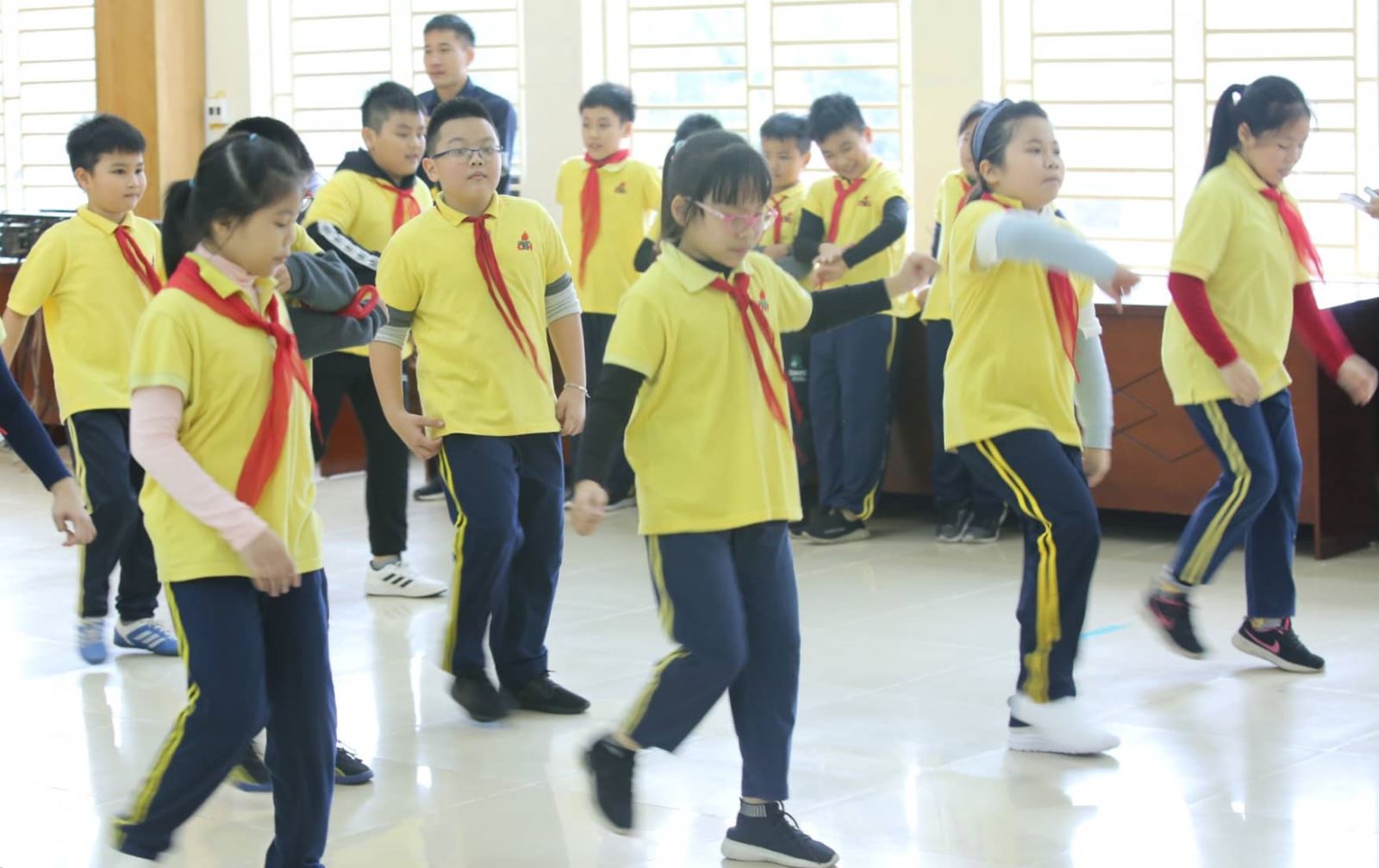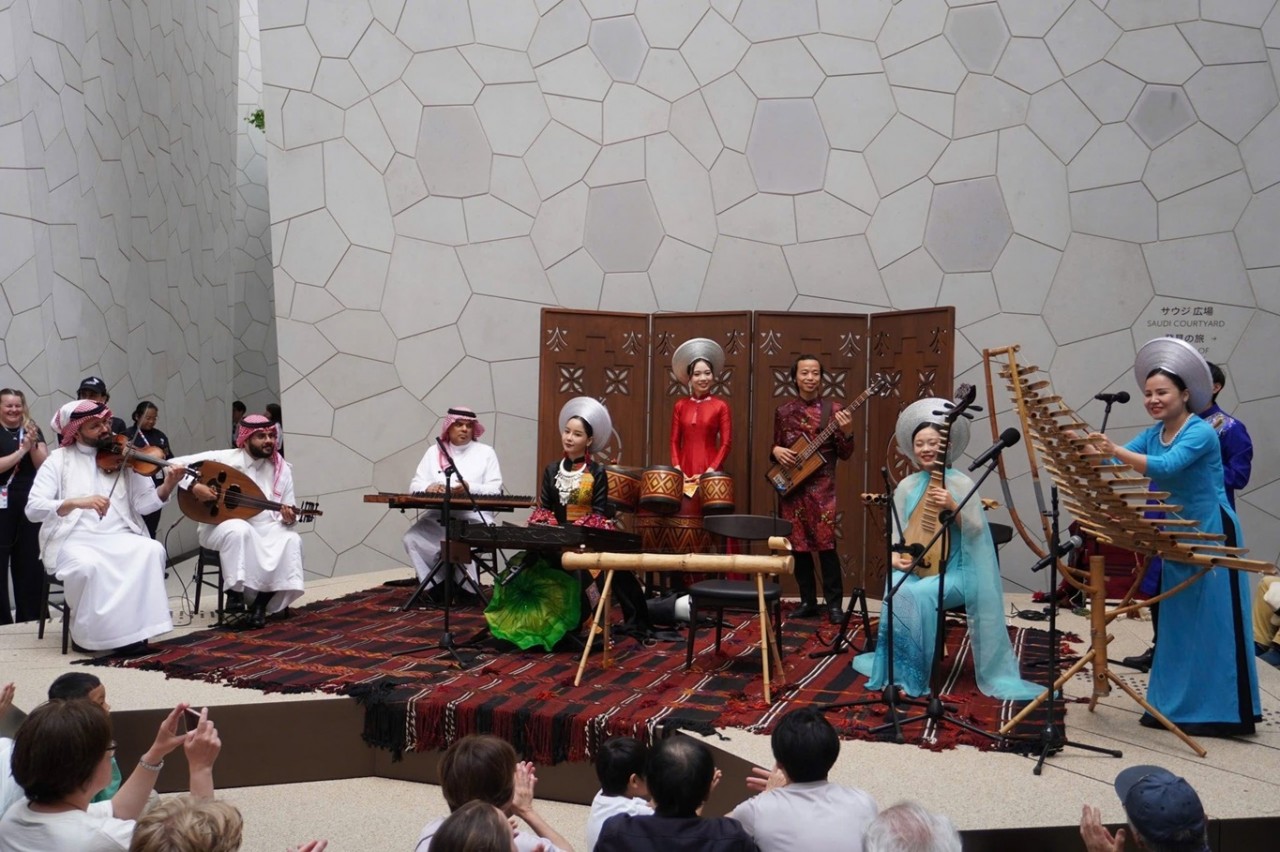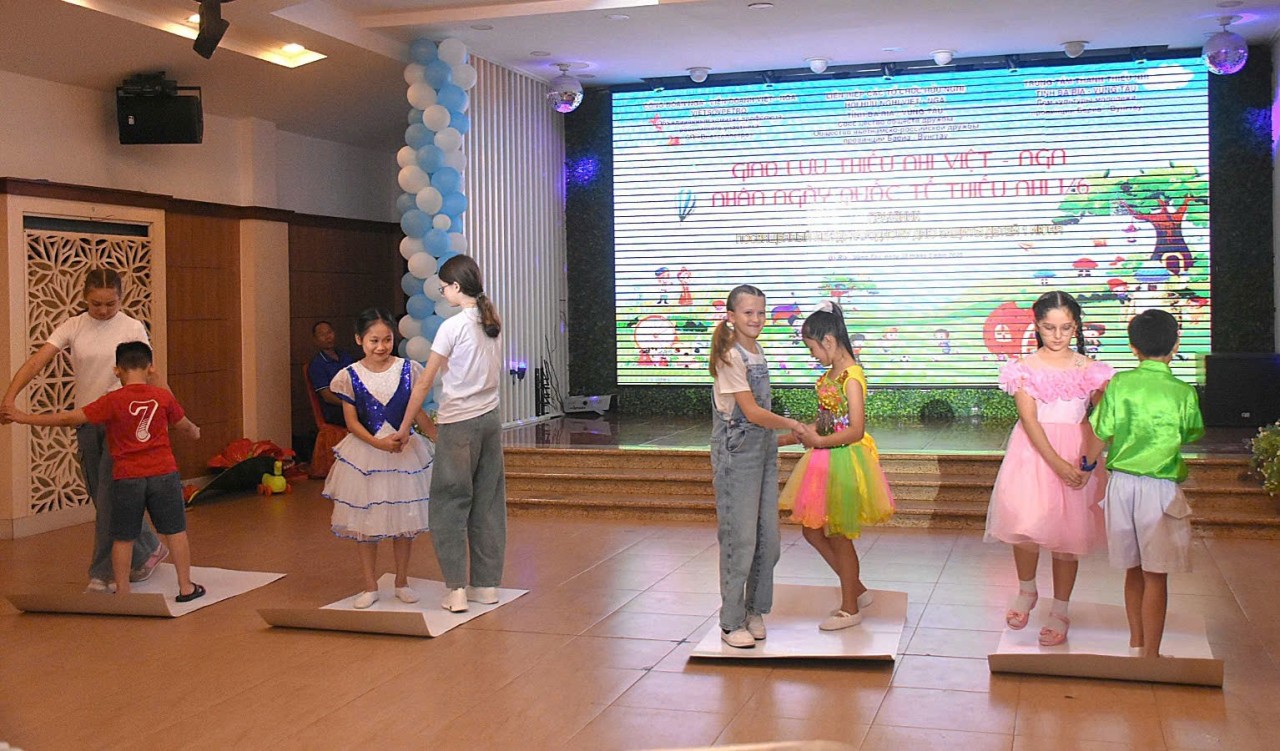Japanese style’s learning through play adopted in Vietnamese schools
 |
PE class. Photo: Viet Cuong
The successful results were not only the efforts of school and local health department, but also the support of the Japan International Cooperation Agency (JICA) on the framework of the lifestyle diseases prevention’s project in several primary schools in Hai Phong city (March 2016 – February 2019).
“The D – FIT help pupils do exercises not only in the physical education’s time, but in lessons’ breaks,” said Nguyen Thi Van Anh, Principal of Dinh Tien Hoang primary school in Hai Phong City. This physical exercise was transformed, basing on the J-FIT of a primary school in Kagawa province in the workshop of JICA and Dinh Tien Hoang Primary school’s teachers in Japan.
As Van Anh’s explanation, D stood for the first letter in the name “Dinh Tien Hoang” of school. She also said, “We designed our specific exercises which make students feel more comfortable, more confident and be fond of those”.
The exercises was modified by Dinh Tien Hoang school’s teachers to connect the affection to student and to be suitable to the tinny space of classrooms and the school timetable in Vietnam.
Beyond the main exercises, D – FIT contained other “flexible” activities, was able to do in class and in 5 minutes breaks between the lessons. In the physical education’s room, Dang Xuan Hieu – physical education teacher said during his lesson with several dozen 4th grade students: “These students learn the simple and dynamic physical exercises of D – FIT quickly. Therefore, they grasp after my first guide and can express it to the new students”.
As in the J – FIT model, Japanese pupils were played their folk games. In Dinh Tien Hoang School, students were also joined in Vietnamese folk games such as tug of war, blind man’s buff…
Furthermore, the D – FIT was also in one part of preventing diseases in school of JICA, especially, saving students from obesity. Because the nutrition was the crucial element, the slogan of the Dinh Tien Hoang Primary School’s lunch was “Mostly vegetable meals”. The menu of school lunches and student’s ration were conducted by nutritionist to ensure providing sufficient nutrition and preventing the obesity.
Because of school’s propaganda, the hygiene’s accomplishment before the lunch became the initiative habit of each student. According to Van Anh, The student’s moderated activities and habit were an effort of Dinh Tien Hoang School’s teachers to express the healthy lifestyle to students and their parents.
Dinh Tien Hoang school’s teachers had plans for constructing this model after participating the workshop of JICA in 2016. Along with the teachers, the Principal Van Anh and experts of JICA held a meeting to give knowledge to students’ parents.
 |
Lunch time. Photo: Thuy Duong
Expanding the model
Dong Trung Kien, Vice Director of Centre for Preventive Medicine of Hai Phong city said the municipal Centre for Preventive Medicine cooperate with Department of Education and Training planned to expand this project.
The Centre for Preventive Medicine created the propagated documents to guide methods and the deployment’s steps of the preventions of lifestyle diseases in school. This model could be expanded in schools in every districts in the city. If some school had registered to adopt this model, the Centre for Preventive Medicine would have delegated experts to advice and guide.
Kien also mentioned about the challenges of applying the preventive model of lifestyle diseases in school. He gave an example of the differences of space and facilities between Vietnamese schools and Japanese schools. “A school in Japan is 2-4 hectare with only 200 students,” said Kien.
Thus, Kien considered the “Vietnamese style” in modifying the Japanese exercises’ models of Dinh Tien Hoang School was creative and should be enlarged.
Kien emphasized “In my opinion, if every people in the schools have consensus, enthusiasm and determination, solving the lacking of facility’s problem in deploying the model is not difficult. Raising people’s awareness in school is the most important mission.”
Translated by Thanh Van
Recommended
 Friendship
Friendship
Vietnam & Saudi Arabia Melody Resonates in Japan Expo
 Friendship
Friendship
People-to-People Diplomacy: Sustainable Bridge of Vietnam-Bulgaria Friendship
 Friendship
Friendship
Binh Duong Hosts Tree Planting to Mark 75 Years of Vietnam-China Diplomatic Ties
 Friendship
Friendship
Hue, Nara Prefecture (Japan) Cooperate to Promote Cultural Heritage Values
Popular article
 Friendship
Friendship
Strengthening Vietnam-Hungary Friendship
 Friendship
Friendship
Another Vietnamese University Partners with Germany’s Konrad Adenauer Stiftung
 Friendship
Friendship
Over 200 Vietnamese and Russian Children Join “Red Scarf Of Friendship”
 Friendship
Friendship



